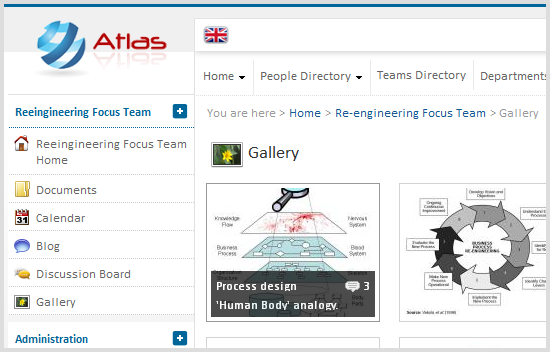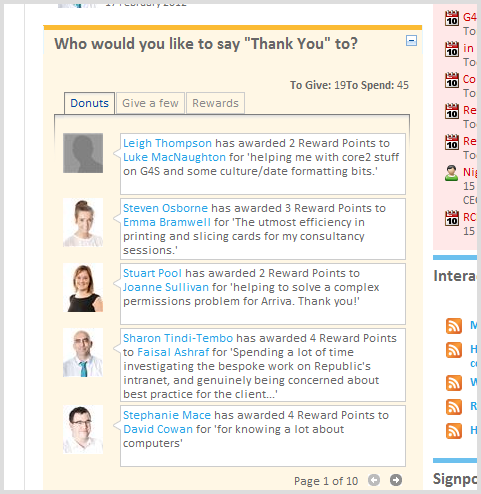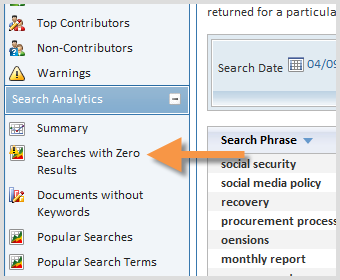53 ways to boost collaboration on your intranet
Collaboration – we all do it off-line and through email and many people want it on their intranet, but for many it seems an impossible task. We all know that filling in profile pages with information, showing people’s pictures and getting senior management involved are vital to getting the cogs of the collaboration machine working, but how does this happen?
Here are some ways you can encourage the positive interactions with your intranet that create a collaboration rich on-line environment. Some of these ideas cross over each other, or support each other, the idea being that if one suggestion didn’t work another similar one might. Not all these suggestions may be for you or your company culture, but some will be, try all that work, tweak them to fit your organisation, invent new ones, but most importantly try something and keep trying, it’s ultimately the only way to succeed with a social intranet.
Here are the first 24 tips for you to digest, if you would like the full list of 53 just let us know and we’ll send it through to you.
Get more tips on how to plan and deploy a successful intranet>>
1. Advertise lists of the most ‘liked’ content
Every time someone ‘likes’ a piece of content on your intranet you’re getting a small peak in positive collaboration. Encourage this, give people a list of the most liked content on your homepage, or within well visited content areas, with links for easy browsing. Help to merge those small peaks into a tidal wave.
![]()
2. Show the benefits
What do you hope enhanced collaboration will achieve? What are the business benefits for you? Have them clear in your mind and whenever these benefits are achieved then show everyone, advertise it, tell people that this is what they are aiming for. Showcase good collaboration; explain why the outcome was a business benefit. Such as helping sales – take this example: “We want to help you improve your win rate against competitor X. Can you share reasons for your losses on in the sales team area?”
3. Create Champions
Look for those who contribute a lot, not just documents, but comments; blogs, forum posts etc and harness that enthusiasm. Make these people champions, have them help you write or rewrite your intranet mission statement or charter, give ideas on how you can build collaboration in your specific environment, what problems do they think collaboration could solve? Impress on these people that by making them champions others will look to them for examples of good collaboration. Give them their own blogs; encourage them to talk about how they became collaboration champions, so that others can understand the sort of collaborative actions, commenting, posting on forums, answering questions etc that’s expected of them.
4. Advertise blogs
Do this on and off the intranet, for those who blog – include a link to their blog as part of their internal e-mail signature. On the intranet use bright, inviting and clickable adverts to direct people to the latest star blog.
5. Images can be content too
Sometimes the heaviest debate can be over images, be it the new company logo, a process flow chart, Venn diagram, KIP graph or circuit diagram. Think of the endless debate over the London 2012 Olympics mascot? Provide facilities for people to add images that matter to them and the option to comment. Make your images more than just supportive additions to text.

6. Reward good collaboration
One of the fastest ways to foster companywide collaboration is to encourage those who embrace it. Look at your stats, who contributes the most? Rewards could be given on an individual or departmental basis, based on the number of forum posts, comments or questions answered or more meaningfully, based on the quality of the comments or posts.
7. Shout about your successes
Sell your intranet, make it synonymous with ‘getting work done more efficiently’ by advertising your successes, however small these may be to being with. Who had their questions answered successfully? Which collaborative discussions lead to money saving, customer service improvements or better practice? Make this quantitative by setting up a homepage widget that promotes this – 5 problems solved, 3 new apps.
8. Have a great reward system
Nothing screams positive collaboration quite like people being given the opportunity to publicly thank those they work with. Not manager praise, but employee to employee thanks for help given, questions answered or good advice. This peer-to-peer recognition is invaluable in boosting company moral, encouraging strong business relationships and helping to grease the cogs of collaboration.

9. If you train them, they will come
Make collaboration training, such as @ and # tagging, commenting on documents, adding posts and answering questions, part of induction intranet training for all your new starters. Maybe set up a training area with tests using collaboration tools.
10. Share problems
This could be a straight forward question. For example: Can anyone suggest a better way of working out the office parking problems? Or something more business process related. Whatever it is empower your staff by asking them for solutions and ideas, perhaps by setting up a forum, or maybe adding the problem as a document and encouraging comments. Interact Answers is a great tool for this as it pushes questions to experts intelligently.
11. In our intranet we trust
In our intranet we trust. Trust is vital to collaboration. If you ask for feedback on a document, ensure the feedback given is seen to be acted upon. Get the author to give an update to their document, or advertise the result of using the feedback given. The more trust they have that the comments and feedback offered will be listened to and acted upon, the more people will be encouraged to collaborate.

12. Good statistics will lead you
Good statistics will lead you. Pay attention to your intranet stats that tell you who your top contributors are, who wrote the most viewed content, or whose document has the most comments and feed this information back to them. This can be extremely motivating and shows that others are aware of their efforts.
13. Encourage friendly rivalry
List the collaboration statistics, perhaps by department. Which department blogs the most, contributes to forums the most, answers the most questions, adds or comments on the most documents? Give praise or small rewards for getting to the top of these lists.
14. Actively encourage non-contributors
Check your statistics. Who’s not contributing? Could they benefit from a few lessons, or mentoring from an intranet champion? Is it a specific set of people? Non-contributors are contributors waiting to happen, sometimes all it needs is a little guidance to get them going.
15. Embrace Questions
No matter how difficult to answer, honestly asked questions are an important part of good collaboration. Don’t stifle or delete them, this will just cripple the trust people have in their intranet and cause resentment. Instead have the question answered by the most appropriately place senior member of staff.
16. Ask experts to blog
There are those in every business who are the experts, the knowledge holders, the experienced. Ask these people to blog about to what they do, day-to-day. They might want to do it weekly, monthly or even quarterly. Give them a few ideas to get them started. For example: A day in the life of the Production Foreman. Not everyone will say yes, encourage those who do to support and help each other.

17. Ideas forum
Create a business benefit driven ideas forum. Where users can express ideas on how customer service can be improved, processes made more efficient and time saved. Review these ideas regularly, ensure senior management is seen to respond every so often. But give people time to come up with ideas and promote a problem a week or month – this is the key!
18. Make sharing knowledge acceptable
In some companies collaboration is seen with distrust as those who have the knowledge think they need it to keep control of their position. Making knowledge sharing acceptable starts with people being willing to answer questions. This can be encouraged by monitoring people who answer the most questions correctly. With Interact Intranet we have Interact Answers, which automatically logs the people that answer the most questions correctly. Use this information to flatter a few egos. It’s great to be considered the expert for a department, how much better would it be to be the top expert in the whole company? Build up a little friendly rivalry. Don’t forget to publicly praise and reward those who provide the most correct answers.
19. Promote new profiles
Ensure new staff fill in their profile page as part of their induction and then promote that profile; employees will be more familiar with the people they work with, which in turn leads to better communication and ultimately improved collaboration. As it’s more intuitive to us as human beings to have discussion and idea sharing with people we know a little something about.
20. Have content worth collaborating on
Check your statistics. How much of your content has high ratings? How much of your content has high ‘like’ scores against it. How much of your content is relevant and up-to-date? Valuable, useful, interesting content is MUCH more likely to get people collaborating, as they will have first wanted to read it. If your statistics show poor, un-read content, start by retraining your authors.
21. Advertise blogs from teams
Give teams the ability to publicly log their progress, even if you are not going to give people access to all their content. Then promote these blogs in a high profile place. This will keep people apprised of what their colleagues are doing, providing information for cross departmental discussion. For example: Marketing blog that they are creating the new posters for a convention next month. Someone in sales reads about this and suggests they might want to try the company they used a few months ago for printing leaflets, as the printers had offered a 10% discount if they used them again before the end of the year and they did a really good job. There’s some really business benefit collaboration.
22. Ask for feedback
If you allow comments on documents, make sure you mention in that document that comments are welcomed. Don’t assume people will comment on a document – give them reasons to comment such as – we regularly update this policy – if you have any ideas let us know below.
23. Offer collaboration tips
Advertise your collaboration drive on your homepage by offering tips to users to help them get into the swing of it. For example:
- ‘If you’re leaving a comment, how about trying @Tagging? – a simple way to link to other content on the intranet’
- ‘Reading a document you think your colleague would like?, try sharing it with them’
- ‘Tell your colleagues if you find something valuable – make it your mission to give one piece of feedback today.’
- ‘What are you working on today? Updated your status and let people know. It may help others and reduce duplication of effort.’
24. Don’t give up
Even small collaboration attempts such as ‘liking’ or ‘sharing’ a document are better than nothing, especially in the beginning. Keep trying, try as many of these 53 points as it takes. Adapt them to your needs, add new ones, if you come up with any good ones I’d love to hear about them.
